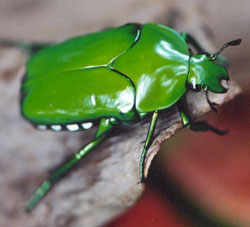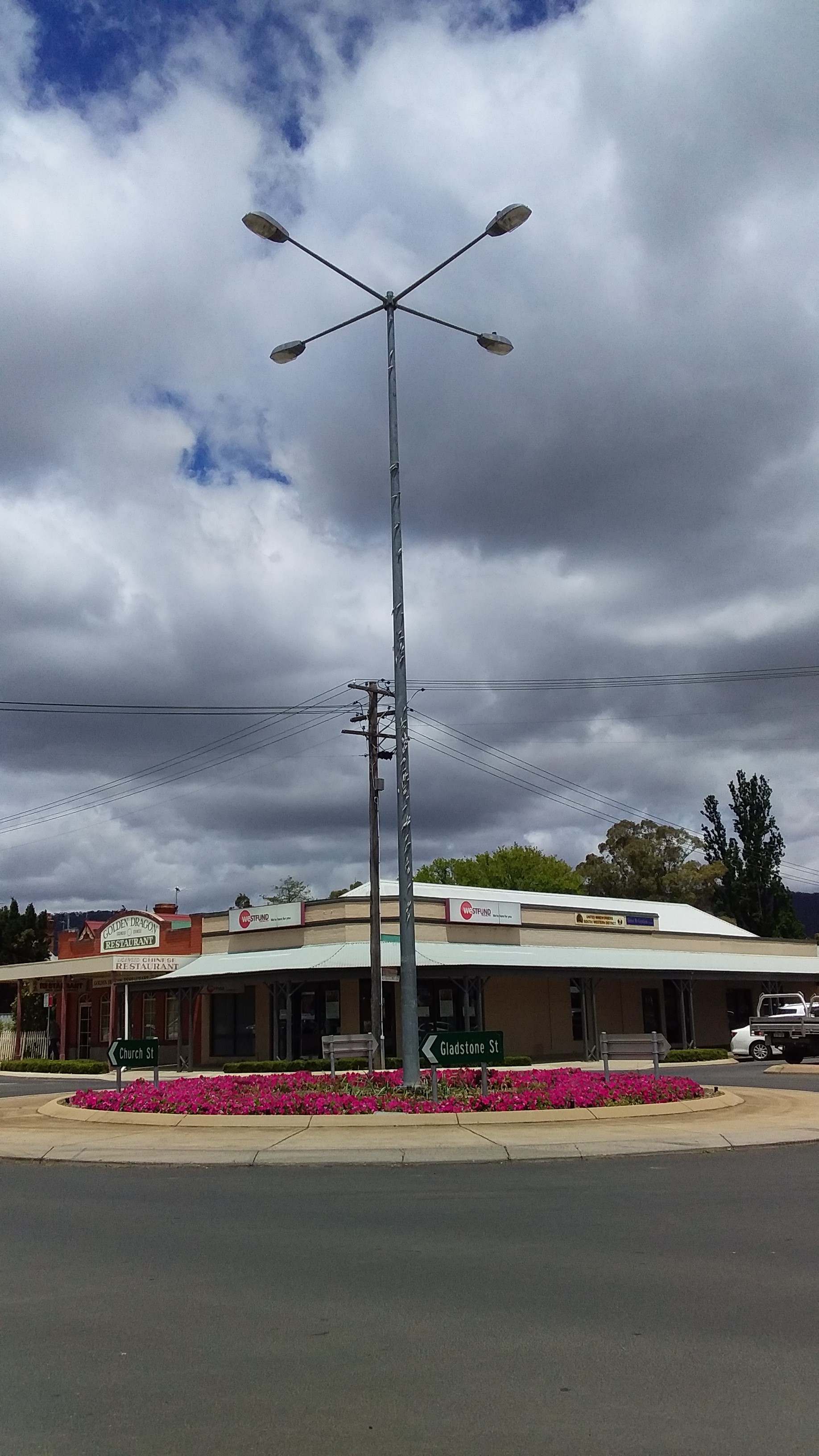Many of our neighbours in the natural world don’t need a calendar to tell them it is getting close to Christmas. Here is an introduction to two creatures you might see at this time of year.
Christmas beetle
‘Most of us would be familiar with the brightly-coloured and glossy  Christmas beetles. We often see them dazed and confused, crawling around on the ground or in the house in the morning after a big night out (they are attracted to bright lights!).
Christmas beetles. We often see them dazed and confused, crawling around on the ground or in the house in the morning after a big night out (they are attracted to bright lights!).
As their name suggests, the adult beetle is most active during the Christmas season and warmer months. There are about 35 species of Christmas beetle (also known as Anoplognathus pallidicollis) across Australia. They are about 20 millimetres in length and belong to the Scarab beetle Family (Scarabaeidae) in the Order Celeoptera. Scarab beetles are the second largest family of beetles in Australia. (Weevils are the largest Family).
The life cycle of a Christmas beetle is from one to two years. The larvae live and develop in the soil for about a year, eating decaying organic matter and plant roots of mainly native grasses and other vegetation. Adult Christmas beetles aren’t much of a pest in most home gardens, although they do feed on eucalypt leaves and can cause severe defoliation in large numbers. In fact, they are usually controlled naturally by native animals such as possums, currawongs, magpies and predatory wasps.
Christmas beetles are an ideal insect to introduce to children as they are quite placid (especially after a big night out).’ Source: https://www.sgaonline.org.au/christmas-beetles/
Case moth
Have you noticed the case moths (or bagmoths) attached to the light pole in the centre of the Church Street/Gladstone Street roundabout? Perhaps they have confused this pole with a tree. Case moths and bagmoths belong to the Family Psychidae.
The caterpillar larvae of the Psychidae construct cases out of silk and environmental materials such as sand, soil, lichen, or plant materials. The case has two openings, one at the top and other at the bottom. The caterpillar comes out from the top to feed and ejects the waste from the bottom end. The bottom opening, which is smaller than the top opening, is also the exit hatch for the emerging adult.
These cases are attached to rocks, trees or fences while resting or during their pupa stage, but are otherwise mobile. The larvae of some species eat lichen, while others prefer green leaves. In many species, the adult females lack wings and remain within their case, waiting for a male to visit.
For more photos of case moths visit: http://www.brisbaneinsects.com/brisbane_moths/PSYCHIDAE.htm

